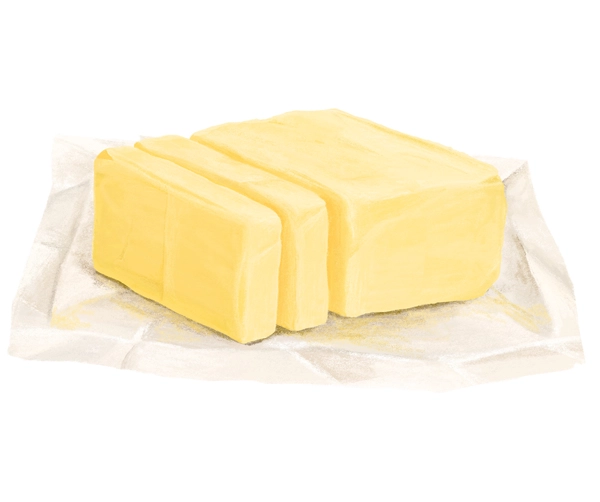Butter
Butter is a classic kitchen staple known for its rich flavor, creamy texture, and versatility in cooking and baking. From sautéing vegetables to spreading on toast or adding depth to sauces and pastries, butter enhances the taste and feel of many favorite foods. At Benefit Market, our butter is a trusted ingredient that helps bring comfort and quality to everyday meals.
Nutritional Benefits
Butter is primarily composed of fat, providing about 100 calories per tablespoon, mostly from saturated and monounsaturated fats. While it’s best enjoyed in moderation, butter does offer some nutritional value. It contains fat-soluble vitamins such as vitamin A, which supports eye health and immune function, and small amounts of vitamins D, E, and K2—important for bone health and cell protection.
Butter also contains conjugated linoleic acid (CLA), a naturally occurring fatty acid found in the milk of grass-fed cows. CLA has been studied for potential benefits related to metabolism and inflammation. Additionally, butter includes butyrate, a short-chain fatty acid that may promote digestive health and support a healthy gut lining.
Serving Tips
Butter is a versatile ingredient used in both sweet and savory dishes. It’s excellent for cooking at medium heat, adding flavor to sautéed vegetables, scrambled eggs, or pasta. When baking, butter contributes to flaky crusts, tender cakes, and rich cookies. Let butter soften before mixing into doughs or batters to ensure even texture.
For a simple and satisfying addition to your meal, spread butter on warm bread or rolls, or melt it over steamed vegetables or mashed potatoes. Butter can also be infused with herbs, garlic, or citrus zest to create compound butters—perfect for finishing meats, seafood, or grilled vegetables.
Clarified butter (or ghee) has a higher smoke point and can be used for higher-heat cooking while offering a more intense, nutty flavor. It’s also lactose-free, making it a suitable alternative for those with dairy sensitivities.
Health Suggestions
Butter is flavorful but calorie-dense, so portion control is key. Use butter mindfully as a complement to whole foods—rather than as the main source of fat—in balanced meals. When possible, choose high-quality butter made from cream with no added ingredients. Grass-fed butter offers a slightly better nutrient profile, including more omega-3 fatty acids and vitamin K2.
To lighten recipes, consider reducing butter slightly in baked goods and replacing a portion with unsweetened applesauce, mashed banana, or plain yogurt. For sautéing, a mix of butter and olive oil can offer the benefits of both flavor and healthy fats.
Butter should be stored in the refrigerator for freshness and can be frozen for long-term use. Keep a small amount softened at room temperature in a covered dish for daily use, especially for spreading.
At Benefit Market, our butter is a flavorful, familiar ingredient that brings comfort and richness to meals. When used thoughtfully, it can be part of a well-rounded diet that celebrates both tradition and taste.
Get Weekly Updates

















